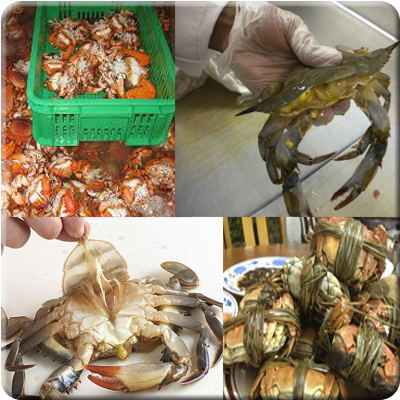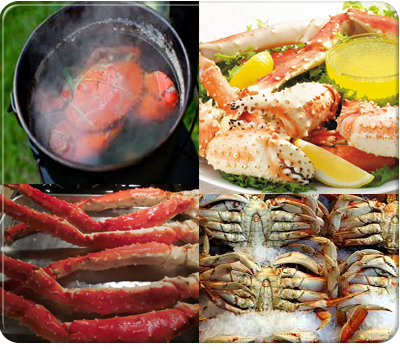Transporting crabs on shore
Crabs travel less well than .They are usually closely packed, back uppermost, in boxes or barrels, with a layer of wet straw or shavings in the bottom of the container to provide some cooling and prevent drying out.
Killing crabs
Crabs should be alive at the start of processing but must be killed prior to boiling; otherwise they will shed their claws. They can be killed either by drowning in fresh water or by spiking the nerve centre or brain. Spiking through the nerve centre is done by inserting a pointed rod just above the mouth parts; the crab is killed almost immediately.
Cooking
Crabs should be cooked immediately after killing by boiling them in water containing 2-3 per cent salt for 20-30 minutes, depending upon size . This amount of cooking will kill a very high proportion of the bacteria present, and will destroy any potential disease-causing organisms.
Picking
After cooking, crabs delivered unpicked are transferred to picking stations where the meat is removed from the shells and is washed and packaged.
Cold Storage
Crabmeat to be utilized immediately is maintained iced or refrigerated until canning. Crabmeat to be processed later may be frozen at this point and maintained in the frozen state until needed. |


